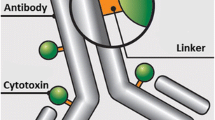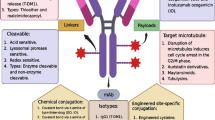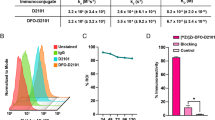Abstract
Introduction
The promise of the natural immunoregulator, Galectin-1 (Gal1), as an immunomodulatory therapeutic is challenged by its unstable homodimeric conformation. Previously, a Gal1 homodimer stabilized via covalent poly(ethylene glycol) diacrylate (PEGDA) cross-linking demonstrated higher activity relative to the non-covalent homodimer.
Methods
Here, we report Gal1 homodimers formed using an alternative thiol-Michael addition linker chemistry.
Results
Poly(ethylene glycol) bismaleimide (PEGbisMal) reacted with Gal1 at multiple sites with greater efficiency than PEGDA. However, multiple PEGbisMal molecules were conjugated to Gal1 C130, a Gal1 mutant with one surface cysteine (cys-130) and two cysteines thought to be buried in the solvent-inaccessible protein core (cys-42 and cys-60). Site-directed mutagenesis demonstrated that cys-60 was the site at which additional PEGbisMal molecules were conjugated onto Gal1 C130. Compared to WT-Gal1, Gal1 C130 had low activity for inducing Jurkat T cell death, characterized by phosphatidylserine exposure and membrane permeability. PEG cross-linking could restore the function of Gal1 C130, such that at high concentrations Gal1 C130 cross-linked by PEGbisMal had higher activity than both WT-Gal1 and Gal1 C130 cross-linked by PEGDA. Mutating cys-42 and cys-60 to serines in Gal1 C130 did not affect the cell death signaling activity of the Gal1 C130 homodimer cross-linked by PEGbisMal. PEGylated Gal1 C130 variants also eliminated the need for a reducing agent, such as dithiothreitol, which is required to maintain WT-Gal1 signaling activity.
Conclusion
Collectively, these data demonstrate that thiol-Michael addition bioconjugation leads to a PEG-cross-linked Gal1 homodimer with improved extracellular signaling activity that does not require a reducing environment to be functional.








Similar content being viewed by others
References
Baldwin, A. D., and K. L. Kiick. Tunable degradation of maleimide-thiol adducts in reducing environments. Bioconjug. Chem. 22:1946–1953, 2011.
Barrientos, G., N. Freitag, I. Tirado-González, L. Unverdorben, U. Jeschke, V. L. J. L. Thijssen, and S. M. Blois. Involvement of galectin-1 in reproduction: past, present and future. Hum. Reprod. Update 20:175–193, 2014.
Camby, I., M. Le Mercier, F. Lefranc, and R. Kiss. Galectin-1: a small protein with major functions. Glycobiology 16:137R–157R, 2006.
Cedeno-Laurent, F., S. R. Barthel, M. J. Opperman, D. M. Lee, R. A. Clark, and C. J. Dimitroff. Development of a nascent galectin-1 chimeric molecule for studying the role of leukocyte galectin-1 ligands and immune disease modulation. J. Immunol. 185:4659–4672, 2010.
Chien, C.-T. H., M.-R. Ho, C.-H. Lin, and S.-T. D. Hsu. Lactose binding induces opposing dynamics changes in human galectins revealed by NMR-based hydrogen–deuterium exchange. Molecules 22(8):1357, 2017.
Earl, L. A., S. Bi, and L. G. Baum. Galectin multimerization and lattice formation are regulated by linker region structure. Glycobiology 21:6–12, 2011.
Elbert, D. L., and J. A. Hubbell. Conjugate addition reactions combined with free-radical cross-linking for the design of materials for tissue engineering. Biomacromolecules 2:430–441, 2001.
Farhadi, S. A., M. M. Fettis, R. Liu, and G. A. Hudalla. A synthetic tetramer of galectin-1 and galectin-3 amplifies pro-apoptotic signaling by integrating the activity of both galectins. Front. Chem. 7:898, 2020.
Farhadi, S. A., and G. A. Hudalla. Engineering galectin–glycan interactions for immunotherapy and immunomodulation. Exp. Biol. Med. 241:1074–1083, 2016.
Fettis, M. M., and G. A. Hudalla. Engineering reactive oxygen species-resistant galectin-1 dimers with enhanced lectin activity. Bioconjug. Chem. 29:2489–2496, 2018.
Fontaine, S. D., R. Reid, L. Robinson, G. W. Ashley, and D. V. Santi. Long-term stabilization of maleimide–thiol conjugates. Bioconjug. Chem. 26:145–152, 2015.
Guardia, C. M., J. J. Caramelo, M. Trujillo, S. P. Méndez-Huergo, R. Radi, D. A. Estrin, and G. A. Rabinovich. Structural basis of redox-dependent modulation of galectin-1 dynamics and function. Glycobiology 24:428–441, 2014.
Hong, L., Z. Wang, X. Wei, J. Shi, and C. Li. Antibodies against polyethylene glycol in human blood: a literature review. J. Pharmacol. Toxicol. Methods 102:2020.
Huang, W., X. Wu, X. Gao, Y. Yu, H. Lei, Z. Zhu, Y. Shi, Y. Chen, M. Qin, W. Wang, and Y. Cao. Maleimide–thiol adducts stabilized through stretching. Nat. Chem. 11:310–319, 2019.
Hudalla, G. A., T. S. Eng, and W. L. Murphy. An approach to modulate degradation and mesenchymal stem cell behavior in poly(ethylene glycol) networks. Biomacromolecules 9:842–849, 2008.
Ito, K., K. Stannard, E. Gabutero, A. M. Clark, S.-Y. Neo, S. Onturk, H. Blanchard, and S. J. Ralph. Galectin-1 as a potent target for cancer therapy: role in the tumor microenvironment. Cancer Metastasis Rev. 31:763–778, 2012.
Ko, J. H., and H. D. Maynard. A guide to maximizing the therapeutic potential of protein–polymer conjugates by rational design. Chem. Soc. Rev. 47:8998–9014, 2018.
Koniev, O., and A. Wagner. Developments and recent advancements in the field of endogenous amino acid selective bond forming reactions for bioconjugation. Chem. Soc. Rev. 44:5495–5551, 2015.
Lorenzo, M. M., C. G. Decker, M. U. Kahveci, S. J. Paluck, and H. D. Maynard. Homodimeric protein-polymer conjugates via the tetrazine-trans-cyclooctene ligation. Macromolecules 49:30–37, 2016.
Miura, T., M. Takahashi, H. Horie, H. Kurushima, D. Tsuchimoto, K. Sakumi, and Y. Nakabeppu. Galectin-1β, a natural monomeric form of galectin-1 lacking its six amino-terminal residues promotes axonal regeneration but not cell death. Cell Death Differ. 11:1076–1083, 2004.
Nair, D. P., M. Podgórski, S. Chatani, T. Gong, W. Xi, C. R. Fenoli, and C. N. Bowman. The thiol-michael addition click reaction: a powerful and widely used tool in materials chemistry. Chem. Mater. 26:724–744, 2014.
Nesmelova, I. V., E. Ermakova, V. A. Daragan, M. Pang, M. Menéndez, L. Lagartera, D. Solís, L. G. Baum, and K. H. Mayo. Lactose binding to galectin-1 modulates structural dynamics, increases conformational entropy, and occurs with apparent negative cooperativity. J Mol Biol 397:1209–1230, 2010.
Nishi, N., A. Abe, J. Iwaki, H. Yoshida, A. Itoh, H. Shoji, S. Kamitori, J. Hirabayashi, and T. Nakamura. Functional and structural bases of a cysteine-less mutant as a long-lasting substitute for galectin-1. Glycobiology 18:1065–1073, 2008.
Nishi, N., A. Itoh, A. Fujiyama, N. Yoshida, S. Araya, M. Hirashima, H. Shoji, and T. Nakamura. Development of highly stable galectins: truncation of the linker peptide confers protease-resistance on tandem-repeat type galectins. FEBS Lett. 579:2058–2064, 2005.
Odom, O. W., W. Kudlicki, G. Kramer, and B. Hardesty. An effect of polyethylene glycol 8000 on protein mobility in sodium dodecyl sulfate–polyacrylamide gel electrophoresis and a method for eliminating this effect. Anal. Biochem. 245:249–252, 1997.
Pace, K. E., H. P. Hahn, and L. G. Baum. Preparation of recombinant human galectin-1 and use in T cell death assays. Methods Enzymol. 363:499–518, 2003.
Pelegri-O’Day, E. M., E.-W. Lin, and H. D. Maynard. Therapeutic protein–polymer conjugates: advancing beyond PEGylation. J. Am. Chem. Soc. 136:14323–14332, 2014.
Ravasco, J. M. J. M., H. Faustino, A. Trindade, and P. M. P. Gois. Bioconjugation with maleimides: a useful tool for chemical biology. Chem. Eur. J. 25:43–59, 2019.
Schellekens, H., W. E. Hennink, and V. Brinks. The immunogenicity of polyethylene glycol: facts and fiction. Pharm. Res. 30:1729–1734, 2013.
Shen, B.-Q., K. Xu, L. Liu, H. Raab, S. Bhakta, M. Kenrick, K. L. Parsons-Reponte, J. Tien, S.-F. Yu, E. Mai, D. Li, J. Tibbitts, J. Baudys, O. M. Saad, S. J. Scales, P. J. McDonald, P. E. Hass, C. Eigenbrot, T. Nguyen, W. A. Solis, R. N. Fuji, K. M. Flagella, D. Patel, S. D. Spencer, L. A. Khawli, A. Ebens, W. L. Wong, R. Vandlen, S. Kaur, M. X. Sliwkowski, R. H. Scheller, P. Polakis, and J. R. Junutula. Conjugation site modulates the in vivo stability and therapeutic activity of antibody-drug conjugates. Nat. Biotechnol. 30:184–189, 2012.
Sundblad, V., L. G. Morosi, J. R. Geffner, and G. A. Rabinovich. Galectin-1: a jack-of-all-trades in the resolution of acute and chronic inflammation. J. Immunol. 199:3721–3730, 2017.
Tao, L., C. S. Kaddis, R. R. O. Loo, G. N. Grover, J. A. Loo, and H. D. Maynard. Synthetic approach to homodimeric protein-polymer conjugates. Chem. Commun. 16:2148–2150, 2009.
Thijssen, V. L., and A. W. Griffioen. Galectin-1 and -9 in angiogenesis: a sweet couple. Glycobiology 24:915–920, 2014.
van der Leij, J., A. van den Berg, G. Harms, H. Eschbach, H. Vos, P. Zwiers, R. van Weeghel, H. Groen, S. Poppema, and L. Visser. Strongly enhanced IL-10 production using stable galectin-1 homodimers. Mol. Immunol. 44:506–513, 2007.
White, C. J., and J. W. Bode. PEGylation and dimerization of expressed proteins under near equimolar conditions with potassium 2-pyridyl acyltrifluoroborates. ACS Cent. Sci. 4:197–206, 2018.
Zhang, B., P. Chakma, M. P. Shulman, J. Ke, Z. A. Digby, and D. Konkolewicz. Probing the mechanism of thermally driven thiol-michael dynamic covalent chemistry. Org. Biomol. Chem. 16:2725–2734, 2001.
Zheng, C. Y., G. Ma, and Z. Su. Native PAGE eliminates the problem of PEG–SDS interaction in SDS-PAGE and provides an alternative to HPLC in characterization of protein PEGylation. Electrophoresis 28:2801–2807, 2007.
Acknowledgments
This research was supported by the National Center for Advancing Translational Sciences of the National Institutes of Health under University of Florida Clinical and Translational Science Award TL1TR001428, the National Science Foundation grant DMR-1455201, and start-up funds from the University of Florida. The content is solely the responsibility of the authors and does not necessarily represent the official views of the National Institutes of Health, nor the National Science Foundation.
Conflict of interest
Bryant J. Kane, Margaret M. Fettis, Shaheen A. Farhadi, Renjie Liu declare that they have no conflicts of interest. Gregory A. Hudalla is a founder of Anchor Biologics, Inc.
Ethical standards
No human studies were carried out by the authors for this article. No animal studies were carried out by the authors for this article.
Author information
Authors and Affiliations
Corresponding author
Additional information
Associate Editor Michael R. King oversaw the review of this article.
Publisher's Note
Springer Nature remains neutral with regard to jurisdictional claims in published maps and institutional affiliations.
Rights and permissions
About this article
Cite this article
Kane, B.J., Fettis, M.M., Farhadi, S.A. et al. Site-Specific Cross-Linking of Galectin-1 Homodimers via Poly(ethylene glycol) Bismaleimide. Cel. Mol. Bioeng. 14, 523–534 (2021). https://doi.org/10.1007/s12195-021-00681-0
Received:
Accepted:
Published:
Issue Date:
DOI: https://doi.org/10.1007/s12195-021-00681-0




